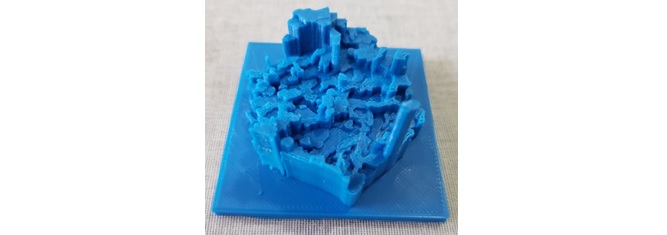Sierra Leone is using 3D printing to create policy by turning complex figures into an easy-to-understand printed model. The idea came about during a meeting at State House in Sierra Leone when President Julius Maada Bio was discussing problems with education.
Bio has been the president of Sierra Leone since April 2018 and focused his first year in office on fighting corruption, clamping down on violence against women and girls, and providing free education for every child across the country.
During one particular meeting, he needed a way to show complex facts and figures easily as there were no screens available. The Directorate of Science, Technology and Innovation (DSTI) in State House was called upon and quickly turned the figures of how many girls are out of school in the country into a 3D model.
This model was 3D printed and President Bio used it to discuss policy with the head of the UK’s Department for International Development, Mary Hunt.
“The fact you can pick it up and turn it around to see different aspects of the map makes you feel like you are there – in Kenema, Kabala or Bonthe – seeing the challenges in people’s lives and what needs to change,” said Hunt. “I was so drawn to its clarity and potential, I had to ask the president if I could take it with me – I wanted to share it with others.”
Should Everyone Use 3D Printed Models in Meetings?
3D printed models have also been used by officials in Sierra Leone to show how far children must walk in order to access their local school. This 3D model prompted a discussion about how buses should be distributed and where roads need to be built.
These models also resulted in the Directorate of Science Technology and Innovation team taking action to build more schools in areas that needed them most.
A 3D printer sits proudly on President Bio’s desk, he said: “We have to take that quantum leap to catch up with the rest of the world using technologies like this.”
Thanks to 3D printing, we are able to visualize complex data-sets and make them easier to grasp. A 3D model easily shows peaks and troughs in data and even cuts through language barriers when discussing a complex topic.
Added President Bio: “All development decisions are actually informed by the data we are collecting and we can actually play around with the data in all its forms either in print of in physical to help us make proper decisions about development in Sierra Leone.”

Source: World Economic Forum
License: The text of "This Country is 3D Printing Data to Help Make Policy Decisions" by All3DP is licensed under a Creative Commons Attribution 4.0 International License.